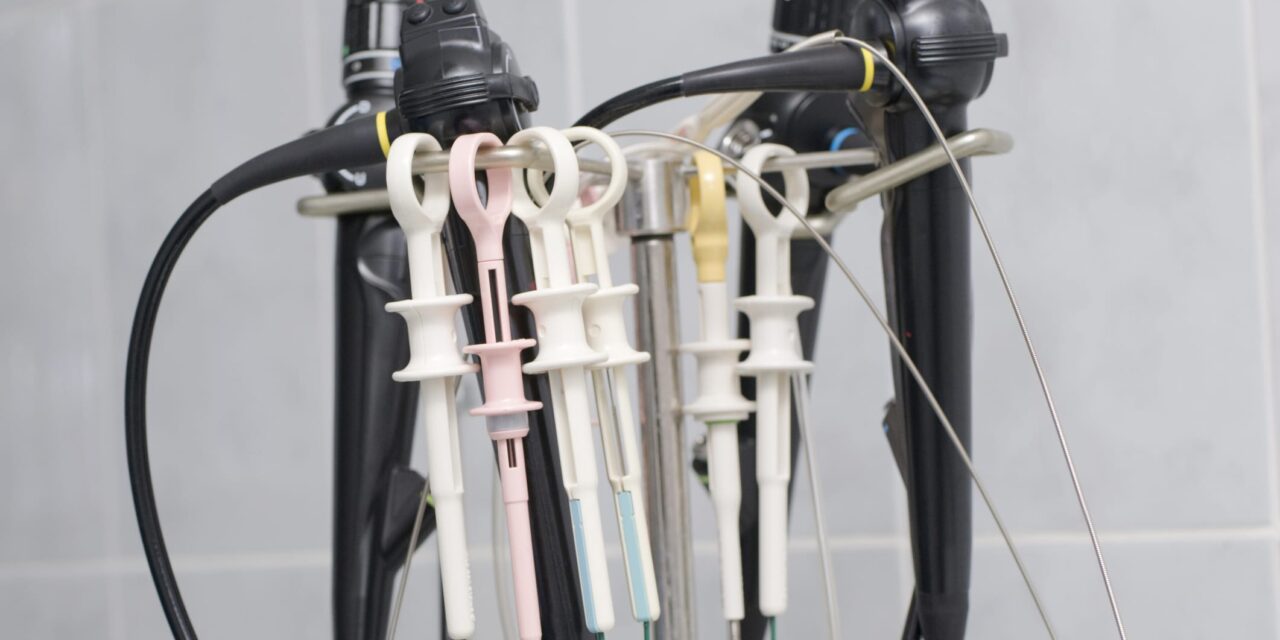A pediatric hospital’s shift to a 14-day endoscope hang time shows how fewer reprocessing cycles may mean fewer repairs without jeopardizing safety.
By Alyx Arnett
At Nemours Children’s Health, a chemical shortage—and a rise in damage to flexible bronchoscopes from reprocessing-related handling—prompted leaders to take a closer look at their seven-day hang-time policy. The team questioned whether the frequent touchpoints required by the interval were contributing to unnecessary wear and costly repairs.
They set out to determine whether extending hang time to 14 days could ease handling and reprocessing demands while still meeting contamination and surveillance standards. To investigate, leaders from infection prevention, sterile processing, and perioperative services collaborated on a structured risk assessment focused on contamination monitoring, workflow implications, and scope longevity.
Study authors Margaret Gilman, MAS, CIC, FAPIC, director of infection prevention; Kwame A. Gyabaah, MHA, BS, CHL, CIS, CER, CRCST, manager in the sterile processing department; Katlyn L. Burr, MSM-HCA, FAARC, RRT, RRT-NPS, AE-C, senior director in the patient care services department; and Edna Gilliam, DNP, MBA, RN, CNOR, NEA-BC, associate vice president in the perioperative services department, share insights on their evaluation and what hospitals should weigh when considering similar hang-time changes.
[Editor’s Note: Read the study, “Using a risk assessment to transition to a 14-day endoscope hang time,” in Biomedical Instrumentation & Technology]
What prompted your team to re-evaluate your endoscope hang-time policy?
It was something we had been discussing peripherally for a while, but when we had a shortage of the chemicals that we use for cleaning and disinfection, it prompted us into action. If we extended our hang times, those chemicals would potentially last longer. The shortage was the impetus to pull this work to the forefront. We were also experiencing an increase in damage to flexible bronchoscopes needing repair due to handling, even when they were not used for procedures. This prompted us to review education on handling, transport, and cleaning, but also made us question the hang time and its potential to reduce costly damage and repairs if it was not needed.
Were any of your findings surprising?
We knew that there were a variety of practices related to hang time out there, including many that are using more than a 14-day hang time. We were confident that we could do this safely; we just needed the structure in place to ensure it. Following the endoscope-related carbapenem-resistant Enterobacterales outbreaks a few years ago, scope reprocessing has been a major focus of both infection prevention and sterile processing. Instructions for use are more explicit and structured, and technologies have improved how we clean and disinfect scopes. We knew our sterile processing department was doing a great job reprocessing scopes and were not surprised when we did not see any bioburden on scopes that hung for 14 days.
What did your contamination surveillance plan entail?
Our contamination surveillance plan utilized our Sterile Processing Microsystem tracking system to capture all data related to this project, including the results of the RESI protein tests performed on each scope. This process was critical to ensuring the validity and success of the trial. For other hospitals, having a robust tracking system is essential. They should implement a structured method for collecting and analyzing this data at the end of the trial period to validate outcomes and maintain patient safety.
Did extending hang time affect workflow, staffing, or scope availability?
Extending hang time did not negatively affect workflow, staffing, or scope availability. However, it introduced an additional requirement for routine scope culturing to ensure ongoing process validation and patient safety. Still, that process was seamlessly integrated into our workflow.
What are the key clinical implications?
By minimizing the frequency of reprocessing, we decrease wear and tear on endoscopes, which can extend their lifespan and reduce maintenance costs. Longer hang times also allow staff to allocate time to other critical tasks rather than repeatedly reprocessing scopes, leading to better resource utilization and overall operational efficiency. Team members can redirect this previous task of every seven days to patient care and other high-priority responsibilities, improving throughput and reducing bottlenecks.
For hospitals considering a similar change, what steps in the risk-assessment process are most important to ensure a safe transition?
Instructions for use are critical, and we need to ensure that they are followed for each different type of endoscope. If the manufacturer of an endoscope has specific requirements for storage, including hang time, those instructions need to be followed. Other important steps include quality control metrics and frequency of use. It may not make sense to move to a 14-day hang time if all of the endoscopes are used within five days of reprocessing. Having robust quality control metrics prior to implementing a change or completing a trial will allow the collection of data through the process that we know is accurate.
Finally, consider a strong multidisciplinary team to develop the risk assessment, bringing in different viewpoints, and look to your infection prevention and control committee for support and guidance for an implementation plan.
What further research would help refine endoscope hang-time policies?
Further research should explore whether modern scope cabinets can safely support extending hang time to 30 days. Evaluating these technologies will help determine if longer intervals can maintain infection control standards while improving efficiency.
ID 18366464 © Stratum | Dreamstime.com
Email [email protected].




